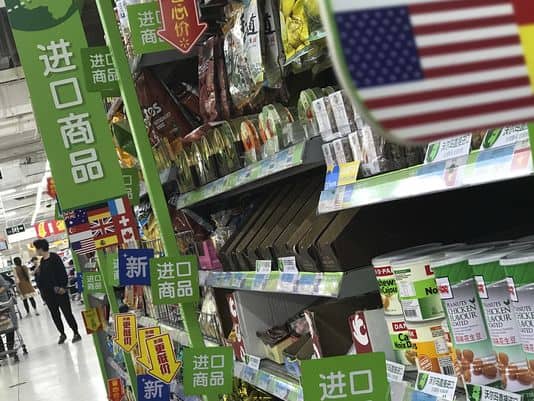
Tariffs could morph into a potential threat to Americans’ finances that goes beyond paying a little extra for a steak, a TV or other everyday items that are expected to rise in price due to the escalating dispute between the U.S. and its trading partners.
The U.S. decision Friday to move ahead with tariffs on $50 billion of Chinese goods could potentially put workers’ investment portfolios and jobs in jeopardy if the trade tiff intensifies and a global trade war breaks out, Wall Street analysts and economists say.
The big risk is if President Trump’s first strike in the tariff conflict is followed by counterstrikes by Beijing and others, such as Canada and the European Union, causing the disagreement to spin out of control and undermine investor and CEO confidence in the economy and markets.
“It’s the indirect effect on confidence that matters,” says Michael Gapen, chief U.S. economist at the New York offices of Barclays, a British bank.
There’s a lot more at stake for consumers than price inflation at the cash register, Gapen says. It is far worse for them financially if the trade fight causes the economy to slow, businesses to stop hiring or start firing, and markets to suffer a sizable tumble that sets their retirement accounts back in a meaningful way. The trade spat could undo much of the economic good set in motion in December by the tax cuts.
Stocks initially swooned on the news Friday, with the Dow Jones industrial average falling as much as 281 points before paring some of its losses to close down 84 points for the day at 25,090.
For now, markets are waiting and watching to see how the high-stakes negotiations play out.
“One of the most significant worries for the U.S. economy and markets is the possibility of a prolonged volley of threats and retaliation,” says Quincy Krosby, chief market strategist at Prudential Financial.
Tiny tariffs
The current dollar amount of U.S. tariffs slapped on Chinese goods are tiny when compared to the size of the $18 trillion U.S. economy. The $50 billion in tariffs targeting Beijing will result in an estimated hit to annual U.S. economic growth of just a tenth of percentage point “at most” and a rise of a similar amount to overall consumer prices, Barclays data show.
The total amount of imported goods bought by Americans represents just a sliver of their overall purchases. Imported purchases, Gapen notes, only account for about 6% of the consumer price index, which measures prices Americans pay for a basket of everyday goods, such as groceries, gas and medicine.
And with the U.S. jobless rate at an 18-year low of 3.8%, “it’s tough to see (tariffs) having a major impact on the consumer” unless consumer confidence, which is at its highest level since 2000, falls a lot, says Don Rissmiller, an economist at Strategas Research Partners in New York.
In an effort to shield American consumers from the tariffs, the list of Chinese products the Trump administration targeted in the first phase of its tariffs focused mostly on “industrially significant technologies.” The initial list, which goes into effect July 6, covers about $34 billion of Chinese goods. The second phase, which is still under review by the U.S., would impose an additional $16 billion of levies, according to the Office of the U.S. Trade Representative.
Passed onto consumers
The tariff list reads more like a supply-parts booklet. It includes things like watertube boilers, printed circuit assemblies for ATM machines, boat propellers, steam turbines, can-sealing machines, TV tuners, flight data recorders, and aircraft launching gear. Consumer-focused stuff was less prominent, but included motorcycles and mopeds, as well as LEDs for backlighting of LCD TVs.
But even tariffs on imported industrial products used to make finished consumer goods in the U.S. will likely result in higher prices — a tax of sorts — that will be passed on to consumers, says Chris Rupkey, chief financial economist at MUFG, a Tokyo-based global bank with offices in New York.
“Production costs will go up here,” Rupkey says. “Consumers are going to lose and pay a higher price no matter if the goods are consumer-based or industrial supply-chain products.”
And higher prices means consumer spending is likely to dip. “Consumers will end up buying less,” says Scott Anderson, chief economist at Bank of the West in San Francisco.
The danger of the dollar amount of tariffs imposed by the U.S. on its trading partners rising sharply, and vice versa, is another risk.
Says Rupkey: “That $50 billion could go higher very quickly.”
Wall Street is still hoping that the tit-for-tat trade skirmish is just a negotiating tactic of Trump that will end with the U.S. receiving better trade terms.
“I view all of this as hardball negotiations,” says Alan Skrainka, chief investment officer at Cornerstone Wealth Management in Des Peres, Missouri.

